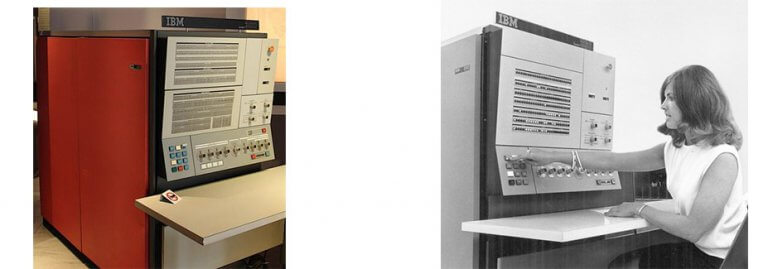Every business is reliant on their customers. And many of those businesses will have a CRM system to help their sales and service teams to manage, record and grow those customer relationships.
In fact, the global customer relationship management market size was valued at $65.59 billion in 2023and is expected to grow 13% by 2030.
With so much demand for CRM, there’s one question we’re here to answer…
How did CRM become such a key element of the modern-day sales business function?
Let’s start at the very beginning. The term “customer relationship management” (often shortened to CRM) first emerged in 1995. It quickly became popularised from 1997 to 2000 by the work of the large players in sales software at the time, such as Siebel, Gartner and IBM.
But we need to wind back even further than this to fully understand how CRM software has become so business-critical today. It has evolved out of a variety of other business programmes over the last few decades. During that time, the CRM industry has undergone drastic changes and improvements that have reshaped the entire concept.
The first CRM software programmes were one dimensional – filing cards with customer details were stored and used to contain very high-level customer information. Today, development has revolutionised CRM software, but the basic goal remains the same: manage customer data to generate sales. Fortunately, evolving tech has made this easier than ever – with lots of other benefits thrown in!
1950s to 1970s: Independent mainframe solutions
The 1950s brought the launch of independent mainframe systems, which could retrieve customer data and automate sales by creating and managing databases. Companies like IBM, NCR and Honeywell were the first to manufacture these systems, but the extent of the technology only allowed users to categorise customers in basic spreadsheets and lists.
The systems were mainly used to digitise manual files to allow for quicker searching and to save storage space. During the same period, IBM coined the term “help desk” to refer to their calling screen system.
Pictured left: IBM System/360 Model 30. Pictured right: IBM system/360 Model 22.

Mid 1980s: Database marketing
During the 1980s, sales reps shifted from direct marketing to database marketing. This was a drastic move from cold outreach to gaining extensive data on individual contacts. It allowed companies to strategically customise their communications to improve conversion rates.
These were the early days of integrating customer information with sales strategy.
Late 1980s: Contact management software
In 1986, Conductor Software launched ACT! – the first contact management tool. The system was bulky, clunky and required a high level of technical expertise to appropriately use.
To use ACT!, companies had to invest a lot into the on-premise based system with IT experts, expensive hardware and software required. Marketers began consolidating platforms such as analytics, transactional databases and customer data to create a more connected digital ecosystem. This brought about internal benefits and more sophisticated sales strategies. Additionally, their help desks started answering and resolving simple customer queries.
Early 1990s: Enterprise resource planning (ERP)
Beyond the 80s, the evolution of CRM made a rapid adjustment. Database marketing transformed into sales force automation (SFA) and the CRM framework consolidated contact, lead and opportunity management into one system. This is how the term ‘CRM’ was officially coined. Help desks became popular and companies began to empower their customer service team to help themselves via CRM systems.
Late 1990s: Online CRM
In 1999, Siebel launched the first mobile CRM called the Siebel Sales Handheld.
Meanwhile, established enterprise resource planning (ERP) companies such as SAP, Oracle, Peoplesoft and Navision started to extend their sales, distribution and customer service capabilities by embedding CRM modules within their ERP solutions. Many of these companies launched their own mobile versions to compete with Siebel. Unfortunately, the software was ahead of the hardware at the time and adoption was poor due to the affordability and lack of mobile devices.
1999 also saw the advent of cloud CRM software. Companies began to realise that cloud-based services and solutions were a much cheaper alternative to maintaining large, complex and expensive on-premise systems.
Salesforce introduced the first software as a service (SaaS) CRM which initially was better suited to small businesses. Then, it quickly scaled up to become more powerful and cater to larger enterprises.
Early 2000s: The internet bubble
The dotcom bubble, also known as the internet bubble, occurred from 1995 to 2000. A rapid rise in US technology stock equity valuations, fuelled by investments into internet-based companies, caused exponential market growth. This eventually led to a market crash in 2001/2002 as equities entered a bear market.
In 2003, Microsoft entered the CRM game with Microsoft Business Solutions Customer Relationship Management 1.0. Microsoft quickly became a leading player in the on-premise CRM industry, by merging CRM with its legacy systems such as Office and Outlook to provide richer and connected functionality. During the same time, help desk technology evolved into support centres.
Mid-late 2000s: Cloud-based CRM and social CRM
SugarCRM pioneered open-source enterprise systems in 2004, which allowed companies to use CRM much more cheaply. The company later launched a cloud-based version, which has now become a standard aspect of CRM solutions in the industry.
The latter part of this period saw CRM shift from a transaction model to an interactive relationship. Around 2009, developers began to profit from social media’s impressive momentum by designing tools that helped companies become accessible on users’ favourite networks. Some start-ups provided exclusive social CRM solutions, such as Base and Nutshell.
In the same year, Gartner organised the first Customer Relationship Management Summit. Here, the company summarised the features that make up and classify a CRM system. In 2007, customer service systems began to enter the market too.
Today
Today, the CRM market remain healthy and in rapid growth. Cloud-based and SaaS solutions have gained more traction in recent years, becoming increasingly essential for organisations.
CRMs are now commonly mobile accessible, AI-fuelled, built on automation and leverage data analysis. This means it’s easier than ever for businesses to manage their leads and customers, while getting the insight they need to close deals, improve experiences and make accurate decisions.
Companies, such as Microsoft, now offer a full suite of purpose-built business applications across their Dynamics 365 software stack that allows their CRM application (Dynamics 365 Sales) to seamlessly communicate and benefit from other applications. This also breaks down data silos that businesses often struggle to overcome.
The CRM market is also more competitive than ever. Now, there are countless options for organisations to choose from, including big name brands like Dynamics 365, Salesforce and Hubspot, alongside industry-specific CRMs. With so much to choose from, the challenge is often choosing the right CRM for your business.
The future
The future of the CRM market is highly promising. Business continue to increase their investment into CRM solutions. This is fuelled largely by a desire to improve sales results and offer a customer experience that outshines competitors.
The infusion of AI and other embedded intelligence tools is also becoming more commonplace in CRM. Earlier this year, Microsoft announced advanced integration between Dynamics 365 Sales and Copilot, their AI assistant, marking that this trend will not slow.
On top of this, the ability to customise CRM systems using out-of-the-box, low-code development tools is becoming more prevalent and essential to the future of the industry. This enables organisations to customise their CRM, leading to higher-performing, innovative systems that are bespoke to specific needs.
Omnichannel is also becoming crucial, allowing your CRM to track interactions across a wide variety of channels. This enables businesses to engage with customers on their preferred channels and provide consistent experiences across all touchpoints, while making personalisation seamless.
Finally, cloud-based CRMs will continue to thrive. These offer scalability, flexibility and cost-effectiveness. Businesses can easily adjust their usage based on their needs and access the platform from anywhere with an internet connection.
What does this mean for my business?
In 2024, customers are still key to your business performance. However, there are now more channels and datapoints to track and target to deliver personalised, outstanding experiences.
In order to suitably engage with potential customers across multiple devices in multiple channels, you need a system that can manage the data and turn it into intelligent outcomes. This means investing in a system that embraces data analysis, automation and AI in a scalable manner, offering futureproofed performance for your business.
Microsoft Dynamics 365 Sales is a market leading CRM system, designed to empower sales teams. It’s built on intelligence, with easy-to-use functionality and integration across your Microsoft systems, fostering collaboration and data visibility.
It’s also support by automated workflows to reclaim your time, with Copilot offering AI-powered insights that drive performance. Plus, with twice-yearly updates, you can continually unlock new value and ensure your CRM meets changing needs and industry trends. You’ll never need a new CRM again.
If you’d like to find out more about how Microsoft is fuelling the future of CRM with AI integration, watch our Dynamics 365 and Copilot explainer video below or get in touch.

